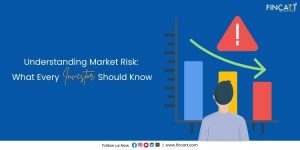When you think of investment risk, what comes to mind? Stock market crashes, interest rate fluctuations, or economic downturns? One risk that often goes unnoticed—but can quietly eat away your returns—is inflation risk.
As inflation rises, the purchasing power of money decreases. This means even if your investment generates a positive return, you could still be losing value in real terms. This phenomenon is known as inflation risk, and it affects all asset classes, from bonds to mutual funds and even the broader financial market.
In this blog, we’ll define inflation risk in investment, explore its key causes, understand how it affects different financial instruments, and outline ways to protect your portfolio.
What Is Inflation Risk in Investment?
Inflation risk, also called purchasing power risk, refers to the possibility that the return on an investment will not keep up with inflation. While an asset may provide a positive nominal return, its real return—adjusted for inflation—could be negative.
For example:
If your investment earns 5% annually but inflation is at 6%, your real return is -1%. Though you made money on paper, its value in terms of what it can buy has declined.
This risk becomes especially concerning in long-term financial planning. Goals such as retirement, children’s education, or wealth accumulation can be severely impacted if the inflation rate is not factored in correctly.
What Is Inflation Risk in Bonds?
Bonds are one of the most directly affected asset classes when it comes to inflation.
So, what is inflation risk in bonds?
It is the risk that inflation will erode the real value of the fixed interest payments that bonds provide. Since bonds typically pay a fixed coupon, they don’t adjust with rising prices. As inflation increases, the fixed income from the bond loses purchasing power.
Example:
You buy a bond with a 7% annual coupon rate. If inflation is 8%, the real return is -1%. Over time, this compounds, causing long-term bondholders to see significant value erosion.
This is why inflation risk in bonds is a critical consideration for conservative investors relying on predictable income.
Inflation Risk and Its Impact on Financial Market
Inflation doesn’t just affect individual investors—it reshapes the entire financial landscape. Here’s how:
1. Interest Rate Hikes
To combat inflation, central banks like the RBI may raise interest rates. While this helps curb inflation, it also increases the cost of borrowing and reduces liquidity, impacting both bond and equity markets.
2. Bond Market Volatility
As interest rates rise due to inflation, newly issued bonds offer higher yields. This causes the price of existing bonds to fall, making them less attractive. This is a direct impact of inflation risk in bonds.
3. Stock Market Fluctuations
Companies may face higher costs of raw materials, labour, and energy. While some can pass these costs to consumers, others may see squeezed profit margins, affecting share prices. Therefore, inflation risk and its impact on financial market includes stock volatility and reduced investor confidence.
4. Currency Depreciation
Persistent inflation can weaken the rupee, increasing the cost of imports and reducing the real value of investments tied to foreign currencies.
5. Investor Behaviour
As inflation rises, investors may shift toward inflation-protected or growth-oriented assets, leading to sectoral rotation and short-term volatility.
Inflation Risk in Mutual Fund Investments
Mutual funds are considered diversified and professionally managed, but they are not immune to inflation risk.
Here’s how inflation risk in mutual fund investments plays out across different types:
1. Debt Mutual Funds
These funds invest in fixed-income securities like bonds, treasury bills, and debentures. Since these instruments offer fixed returns, they are highly vulnerable to inflation. When inflation rises, interest rates typically follow, leading to a fall in bond prices and mutual fund NAVs.
Impact: Lower real returns and capital erosion in long-duration debt funds.
2. Equity Mutual Funds
Equities tend to perform better during inflationary periods—especially companies with strong pricing power. While they offer better protection, not all stocks can withstand inflation pressure. Sectoral performance matters.
Impact: While equity mutual funds can outpace inflation in the long run, short-term inflation spikes can affect earnings and sentiment.
3. Hybrid Mutual Funds
These invest in both equity and debt. While they offer balance, the debt component remains vulnerable to inflation risk unless actively managed.
4. Liquid and Ultra-Short-Term Funds
Less impacted by inflation due to shorter duration, but they also offer lower yields, which might not outpace rising inflation.
What Causes Inflation Risk?
Understanding the causes helps investors anticipate and plan better. Here are the major drivers of inflation risk in investment:
1. Rising Consumer Prices
An increase in the prices of everyday goods and services leads to reduced purchasing power, especially affecting fixed-income investments.
2. Monetary Policy and Excess Liquidity
Central banks may print more money to boost the economy. If this increased money supply outpaces economic output, inflation rises.
3. Cost-Push Inflation
When the cost of production inputs—such as fuel, raw materials, or wages—increases, producers pass on these costs to consumers, causing inflation.
4. Supply Chain Disruptions
Pandemics, wars, or geopolitical tensions can disrupt global supply chains, reduce supply, and raise prices—leading to inflation risk.
5. Currency Depreciation
A weakening rupee increases the cost of imports and overseas investments, contributing to domestic inflation.
6. Wage-Price Spiral
Higher wages lead to higher production costs, which are passed on as higher prices, creating a self-reinforcing inflation loop.
Asset Classes Most Affected by Inflation Risk
Bonds
As detailed, inflation risk in bonds is significant due to fixed returns.
Mutual Funds
Especially debt-heavy funds, unless strategically managed.
Fixed Deposits
Bank FDs lock in interest rates that may not keep pace with inflation.
Annuities
Post-retirement annuities that pay a fixed monthly income may lose value over time due to inflation.
Cash Holdings
Money lying idle in savings accounts or cash depreciates rapidly in a high-inflation environment.
How to Mitigate Inflation Risk
Here are some practical strategies investors can adopt:
1. Invest in Inflation-Indexed Bonds
These government-issued bonds adjust returns based on inflation data. They are ideal for conservative investors.
2. Focus on Equities for Long-Term Goals
While volatile, equities can beat inflation over time, especially growth-oriented and dividend-paying stocks.
3. Choose Short-Duration Debt Funds
Reduce exposure to long-term debt instruments. Short-term funds are less sensitive to interest rate hikes triggered by inflation.
4. Diversify Across Asset Classes
Include equities, real estate, commodities, and international funds to hedge against domestic inflation.
5. Use SIPs with Step-Up Option
Systematic Investment Plans (SIPs) with periodic increase in contribution help adjust for rising inflation.
6. Consider Floating Rate Instruments
These adjust their interest payouts based on market rates, reducing inflation risk.
Real-Life Impact: A Quick Scenario
Let’s assume you’re saving ₹50 lakhs for retirement 20 years from now. If inflation averages 6% annually, you’ll need over ₹1.6 crores in future value to maintain the same purchasing power.
Now, if your investments earn 7% annually, your real return is just 1%—hardly enough to beat inflation over two decades. Without inflation-adjusted planning, your retirement corpus could fall drastically short of your needs.
The Way Ahead
Inflation risk in investment is subtle but powerful. It erodes the real value of returns, particularly in fixed-income instruments like bonds and debt mutual funds. Understanding what is inflation risk in bonds, recognizing inflation risk in mutual fund strategies, and acknowledging inflation risk and its impact on financial market trends is crucial to preserving and growing your wealth. A financial advisor can help you understand how different risks affect different investments so that you can make decisions that align with your risk tolerance.
You can’t eliminate inflation, but you can prepare for it. With proper diversification, the right asset mix, and inflation-aware investing strategies, you can ensure your money doesn’t just grow—but grows in real value.




